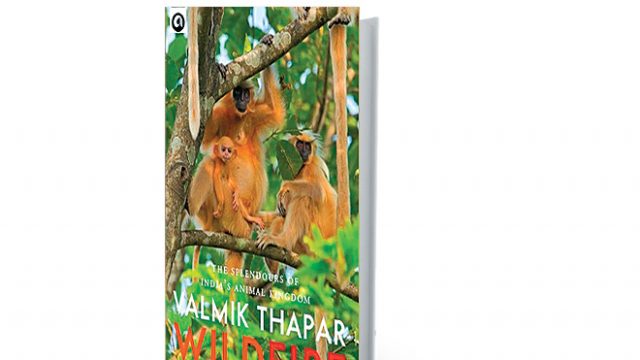Wild Fire is not meant for bedtime reading. At 1,400 grams, not only is it heavy, but some of the stories are nail-biting tense. The fat volume is divided into three sections called ‘books’. Book One is a rambling account of the various geographic regions of the country and their fauna blended with author Valmik Thapar’s observations.
Book Two, called ‘The Wildlife Chronicles,’ takes up more than a third of the book. It’s a delightful collection of choice pickings from the writings of historic personages like Pliny the Elder and Ibn Battuta to the best of the modern writers such as Ruskin Bond. Most excerpts are a bite-sized page or two in length, ranging from fantastic fables to astutely observed natural history notes.
The visual richness of miniature and colonial-era paintings, etchings, and sketches transport the reader to another era. The bulk of these illustrations, sourced from private collections, the British Museum, and the Victoria and Albert Museum, would not be accessible to wildlife enthusiasts.
Book Three, the eponymous ‘Wild Fire’, is a fantastic collection of wildlife photographs, among the best this reviewer has seen. While mammals take the pride of space in text and illustrations, a few reptiles, birds, and insects manage to make an appearance. The work of more than 55 photographers makes this book a vibrant ode to Indian wildlife. There is no easy way to find the name of the photographer who wowed me. I had to run a finger down the length of photo credits, listed alphabetically by name, chanting the page number until I found a match.
Many of the older writings don’t mention the location where the described incident occurred. For example, Henry Astbury Leveson writes, in ‘A Bloody Expedition,’ of killing seven sloth bears, grievously injuring one, and capturing a cub alive. Where in India could one have seen so many sloth bears in one day in 1871? Neither the title of the source text, Hunting Grounds of the Old Worlds, nor the editor of the book offer any clues. Similarly, the old illustrations have no captions, no credit, nor the year they were painted. One intriguing picture shows a wicker basket with a bleating fawn (or is it a lamb?) hung from two bamboo poles outside a village on a full moon night, while a pack of wolf-like canids with bared teeth lurk below. There’s no explanation to enlighten the curious reader. All these faults notwithstanding, Wild Fire is a great way to immerse oneself in the wildlife wonderland that was India.




